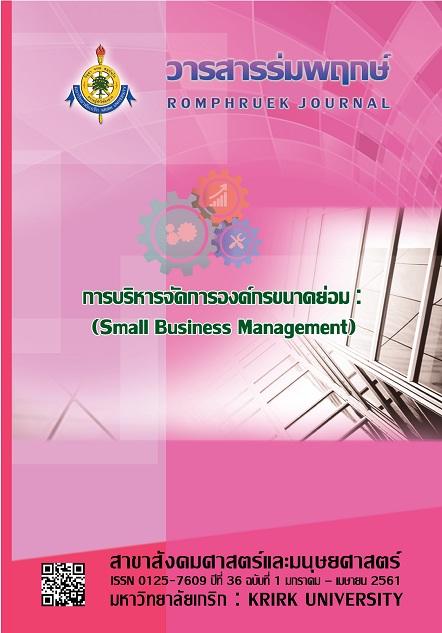Anti-dumping, Subsidies, and Safeguards : Which is the best measure for WTO members?
Main Article Content
Abstract
For developing the countries, trading plays one of the important roles the country should apply. It can be significant mechanism to improve the states. However, in some countries, the cost of labor is so high that it has an impact on the production cost. As a result, local people normally turn to spend money on imported goods from China or Vietnam which have lower price. For this reason, the lower priced goods from those countries will dominate the market. Thus, it is necessary to have the measure to protect the market and domestic goods and encourage the local people to purchase local products more. The World Trade Organization issues the measures to protect their member countries such as Anti-dumping, Government Subsidies and Safeguards. In this article, the authors examine the best measure for WTO members.
Article Details
Every article published in the Romphruek Journal of the Humanities and Social Sciences is the opinion and point of view of the authors. Thery're not the viewpoint of Krirk University or the editored department. Any part or all of the articles for pablication must be clearly cited.
References
MIT Press, Cambridge.
Bossche P. V. D., (2008). The Law and Policy of the World Trade Organization. 2nd edn.
London : Cambridge University Press.
Bown C. P. and McCulloch R., (2003). Non Discrimination and the WTO agreement on
Safeguards. World Trade Review, 3, 1-22.
Clements B., Hugounenq R. and Schwartz G., (1995). Government Subsidies : Concepts,
International Trends, and Reform Options. (IMF Working Paper)
Council of the European Union. (2010). Council Regulation (EC) No 384/96 of 22 December
1995 on protection against dumped imports from countries not members of the
European Community. LUXEMBOURG : EU Publication.
Cunnane J. and Stanbrook C., (1983). Dumping and Subsidies. n.p. : European Business
Publications.
Cuyvers L. and Dumont M., (2005). EU anti-dumping measure against ASEAN countries :
Impact on trade flows. Asian Economic Journal, 19, 249- 271.
Faraidoon R. and Salehizadeh M., Dumping : The influence of currency Movements. The Journal
of World Trade, 181(28),3.
Farr S., (1998). EU anti-dumping Law : Pursuing and defending Investigations. Copenhagen :
Business School Press
Ganguli B., The Trade effect of Anti-dumping Actions. Review of International Economic. 16 (5),
930-941.
Gupta R. K., (1996). Anti-dumping and countervailing Measures. London : Response book.
Hoekman B. and Kostecki M. M., (2001). The Political Economy of the world trading system.
Oxford : Oxford University Press.
Horn H., Mavroidis P. C. and Sapir A., (2009). Beyond the WTO? An anatomy of EU and US
preferential trade agreements. Brussels, Belgium : Bruegel.
Konings J. and Vandenbussche H., (2008). Heterogeneous Responses of firms to trade
Protection. Journal of International Economic, 76, 371-183.
Kostecki M. M., (1991). Marketing strategic between dumping and anti-dumping action.
European Journal of Marketing, 2.
Mavroldis P.C., Messerlin P. A. and Wauters J. M., (2008). The Law and Economics of
Contingent Protection in the WTO. Massachusetts : Edward Elgar Publishing Limited.
Niels G., (2000). What is anti-dumping policy really about?. Journal of Economic Survey. 14(4),
467-492.
Prusa T., (1992). Why are so many anti-dumping petitions withdraws?. Journal of International
Economic, 33, 1-20
Trebilcock M. J., (1995). The regulation of International Trade. 3edn. London : Routledge.


